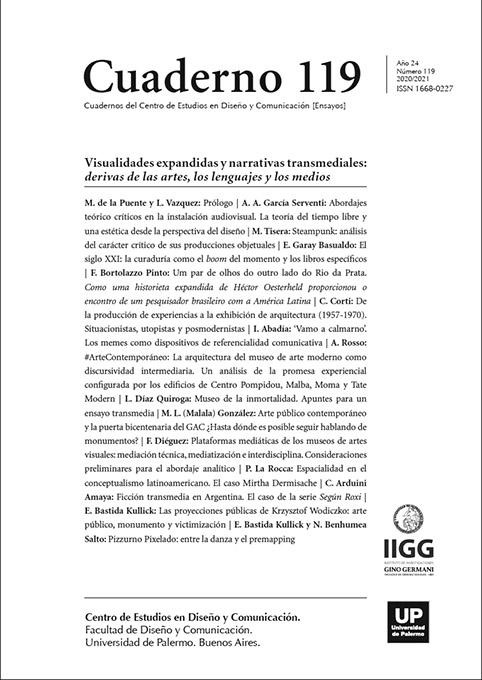‘Vamo a calmarno’. Los memes como dispositivos de referencialidad comunicativa
Abstract
An image is shared in a social network. Instantly, many people are able not only to see it, but they can, through their digital devices, save it, edit it, and even share it. A long time later, the image is published again, but now, it has a filter, a couple of low-quality editions, and a text that accompanies it in a sarcastic tone. It travels the web again, but this time, millions of people read it, laugh at it, and save it to be shared later in future conversations. Like this small example, thousands of images are created every day and can ‘speak’ in several contexts, without any limits and even crossing geographical and linguistic borders. This digital phenomenon, named ‘meme’ (a term adapted from sociology) is commonly related to mockery and parody, and academically speaking it has been studied from different positions, but mainly from linguistics and discourse analysis.
References
AlvaroUribeVel (2015). Gbno, reaccione por favor, esto es un sentimiento generalizado… [Post de twitter] https://twitter.com/AlvaroUribeVel/status/589407316740591616
Blackmore, S. (1999). The meme machine. Londres: Oxford University Press.
Börzsei, L. (2013). Makes a Meme Instead. A Concise History of Internet Memes. Recuperado de: http://works.bepress.com/linda_borzsei/2
Brandon Glass (2003). Crying Soldier [Fotografía de Flickr]. https://www.flickr.com/photos/brandonglass/16407304/
Buchel, B. (2012). Internet Memes as Means of Communication (Tesis de maestría). Universidad Masaryk, República Checa.
Cortazar, F. (2014). Imágenes rumorales, memes y selfies: elementos comunes y significados. Revista de Ciencias Sociales y Humanidades, 35(77), 191-214.
Da Cunha, R. (2007). Memes em weblogs: proposta de uma taxonomia, FAMECOS, 32. http://revistaseletronicas.pucrs.br/ojs/index.php/revistafamecos/article/view/3411
Dancygier, B. y Vandelanotte, L. (2017). Internet memes as multimodal constructions. Cognitive Linguistics, 28(3), 565-598.
Davison, P. (2012). The Language of Internet Memes. En M. Mandiberg. The Social Media Reader, (pp. 120-134). Nueva York, NY: New York University Press.
Dawkins, R. (1993). El gen egoísta. Las bases biológicas de nuestra conducta. Barcelona: Salvar Editores.
Don. (2017). Roll Safe. http://knowyourmeme.com/memes/roll-safe
El espectador. (2017, Abril 17). Reunión de Pastrana, Uribe y Trump: ¿fue o no fue? https://www.elespectador.com/noticias/politica/reunion-de-pastrana-uribe-y-trump-fue-o-nofue-articulo-689696
Humor Vault. (2018). Mildly Infuriating - Episode 2. https://www.youtube.com/watch?v=TcoFzIBRxIE
imagechef. (2008). Periódico [Mockup]. http://www.imagechef.com/ic/es/makef.jsp?hashid=2b38
Juza, M. (2013). Internet memes–creation, distribution, social meaning. Academic Journal Media Studies, 55(1). http://studiamedioznawcze.pl/Numery/2013_4_55/juza-en.pdf
Knobel, M. y Lankshear, C. (2007). Online memes, affinities, and cultural production. En A New Literacies Sampler (pp. 199-227). Nueva York, NY: Peter Lang Publishing.
Laugh Nation. (2016). Oddly Satisfying Compilation - Relaxing Video’s 2. https://www.youtube.com/watch?v=Nbwos7S1tFM
Manovich, L (2013). El software toma el mando. New York, NY: Bloomsbury.
Mirzoeff, N. (2003). Una introducción a la cultura visual. Barcelona, España: Ediciones Paidós.
Mitchell, W.J.T. (2009). Teoría de la imagen, ensayos de la representación verbal y visual. Madrid: Ediciones Akal.
Mitchell, W.J.T. (2014) ¿Qué quieren realmente las imágenes? México DF: COCOM Press.
MrGear. (2016). EXPERIMENT Glowing 1000 degree KNIFE VS COCA COLA https://www.youtube.com/watch?v=hjSheQ7LgJ4
Panofksy, E. (2001). Estudios sobre iconología. Madrid: Alianza Editorial.
Los autores/as que publiquen en esta revista ceden los derechos de autor y de publicación a "Cuadernos del Centro de Estudios de Diseño y Comunicación", Aceptando el registro de su trabajo bajo una licencia de atribución de Creative Commons, que permite a terceros utilizar lo publicado siempre que de el crédito pertinente a los autores y a esta revista.


